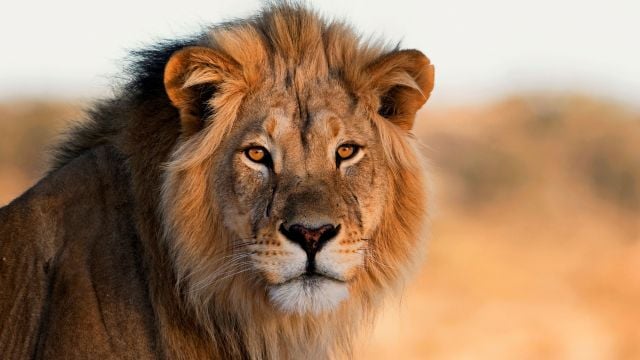They’re also endangered, and estimates now put the wild lion population at around 23,000.
To mark World Lion Day, here’s a few things you may not have known about one of the world best-loved creatures…
1. Lions are really, really loud
Unlike their fellow felines, lions have flat, square vocal chords that allow them to let out louder sounds than almost anything else in the animal kingdom. At one metre, a lion’s roar tips the scales at roughly 114 decibels – that’s louder than most rock concerts, and several varieties of jet engine.
2. Lions sleep up to 20 hours a day
Lions are fearsome predators at the top of the sub-Saharan food chain – and spend the large majority of their lives semi-conscious, snoozing. It doesn’t make for great documentary footage, but catching prey takes an inordinate amount of energy and when not hunting, lions are lazy as can be.
3. Their most dangerous foe isn’t what you’d think
In times of need, lions will happily tackle the bulk of a water buffalo or even an occasional elephant, but their most dangerous foe by far is the humble African porcupine. Prickly prospects for any predator unwise enough to get within quill range, recent research found at least 50 documented cases of lions being killed or maimed by the creatures, while many more escape with only scars.
We are, of course, excluding man from this equation, and trophy hunting tourists alone kill hundreds of the animals every year.
4. Some lions have taken to climbing trees
When you think tree-climbing cats, you probably picture pumas, leopards, or the tabby from next door. It’s true that lions are typically more common under trees than in them, but some specific populations have started using branches as rest spots and vantage points. All lions can climb trees, it’s just that most don’t.
5. Lion’s can’t move their eyes
Lions have laser-like eyesight, in that it’s strong, well-adapted for low light, and almost entirely fixed in one direction. When lions want look at something, they have their entire head towards it, as their peripherals are almost non-existent. Night vision in; sideways glances out.
6. Lions are the ultimate binge-eaters
You never know where the next meal is coming from in the harsh East African ecosystem, and prides will often go several days without finding food. When they do score a kill, it’s time to cash in, and an adult male can scoff 40kg of meat in a single sitting. That’s up to a quarter of its body weight.
7. Lions walk on their tiptoes
Like many cats, lions are ‘digitigrades’, meaning they walk on tiptoes with heels suspended in the air – equivalent to a human walking like a ballerina.
8. A lion’s mane changes colour with age
Just as humans go grey, lions go black, and ageing males develop a dark, distinguished tinge to their manes. This ‘silver fox’ look is highly prised among females, and an experiment using life-sized dummies found that dark-maned males were much more attractive to potential mates.
9. Lions were once extremely widespread
Lions once populated Africa, Asia and Europe, stretching all the way from Pakistan to Hungary. Today, there is just one lion population outside Africa – a colony of 500-odd Asiatic lions in India’s Gir National Park.







